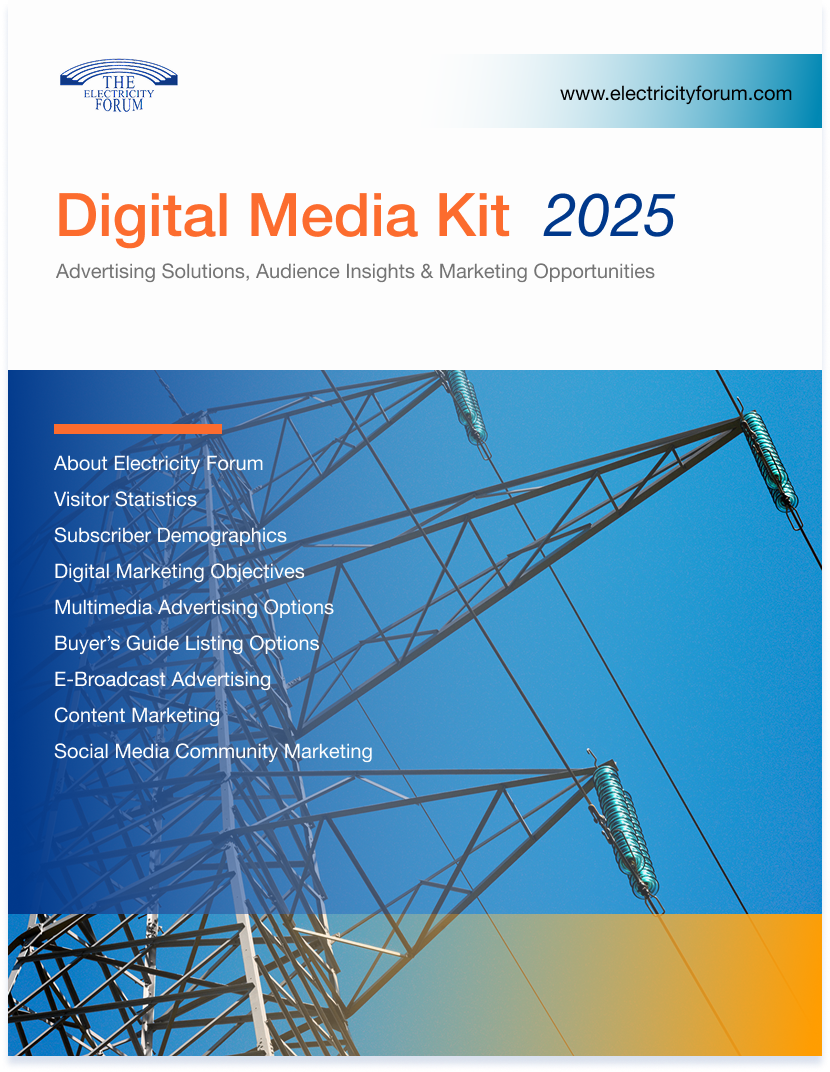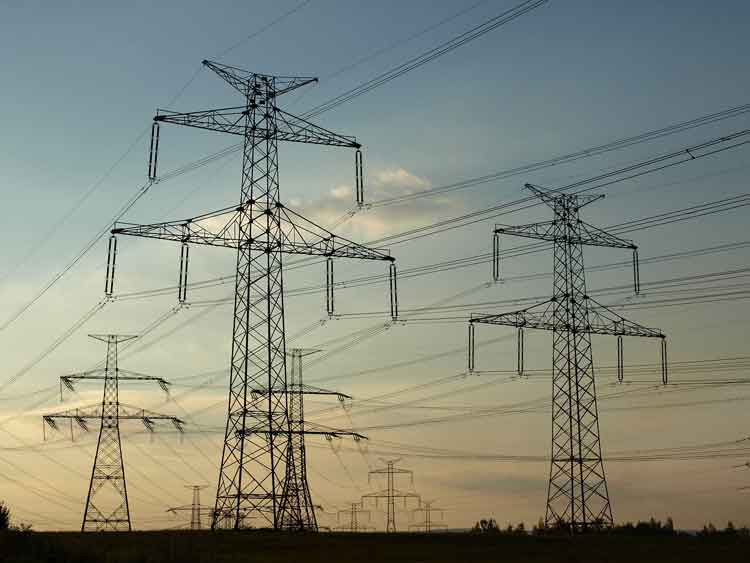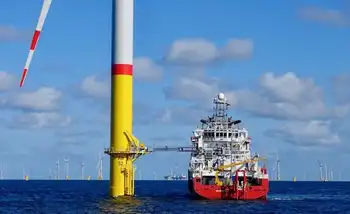NB Power pursues coal gasification
By New Brunswick Telegraph-Journal
CSA Z463 Electrical Maintenance
Our customized live online or in‑person group training can be delivered to your staff at your location.

- Live Online
- 6 hours Instructor-led
- Group Training Available
Some 30 years later, an emerging environmental crisis has renewed interest in a technology that's capable of producing clean power from one of the dirtiest sources going.
Coal gasification is a process in which coal is converted into a fuel gas that's almost as clean as natural gas and much cleaner than energy from traditional coal-fired plants.
Just recently, a company based in Akron, Ohio said it was in discussion with NB Power about converting the thermal generating station in Dalhousie to coal gasification. The refit is one option for saving the roughly 120 jobs that could be lost if Dalhousie goes offline in 2011.
While there are no coal gasification plants currently running in Canada, Robin Hughes, a senior researcher at Natural Resources Canada's CANMET laboratories, said commercial use of the technology is slowly coming to North America.
"I think we're going to see a lot more of them, it's an extremely clean technology," Hughes said in an interview.
There are more than a dozen kinds of technologies to gasify coal, but the most common is known as the integrated gasification combined cycle IGCC, Hughes said.
In that process, coal and oxygen are exposed to a flame in order to produce a "syngas" that is rich in hydrogen and carbon monoxide. A series of steps are then taken to remove harmful agents such as sulfur, nitrogen and heavy metals from the syngas.
Once scrubbed of pollutants, the gas goes through a combustion turbine and steam turbine where it is burned to produce energy.
"The end effect is you get to produce power extremely cleanly," Hughes said. "It's nearly as clean as a natural gas combined cycle unit from the point of view of typical emissions."
Coal gasification technology was first developed in the 1780s but became widely available in the 1940s as North American and European cities used coal gas to heat and light homes. About 10 years later, however, the emergence of natural gas — then boasting a superior heating value and fewer contaminants — largely replaced coal gas.
The technology experienced a revival following the oil crisis of the 1970s, as many nations worldwide started eyeing large coal reserves as a way to reduce their dependency on petroleum resources.
IGCC technologies, which made gasifying coal more clean and efficient, were developed in the past 20 years.
There are three power plants in the United States currently using the technology. The massive Great Plains Synfuels Plant near Beulah, North Dakota, is the only commercial-scale coal gasification facility in the United States. The US $2.1-billion plant began operating in 1984 and produces about 153 million cubic feet of gas daily.
Tampa Electric Company's Polk Power Plant, located near Mulberry, Florida, was America's first commercial IGCC plant. Completed in 1996 at a cost of roughly $303 million, the plant is capable of generating 313 megawatts of electricity.
A third plant, the Wabash River Coal Gasification Repowering Project in West Terre Haute, Indiana, came online in 1994. The full-size commercial IGCC plant cost $417 million and can produce 296 megawatts of electricity.
"There's a lot of parts in the world where it is really taking off," Hughes said, adding there are upwards of 20-30 coal gasification plants running in Asian nations such as China and Japan.
The bulk of them produce chemicals rather than energy, Hughes noted.
"One of the nice things about coal gasification is you have the option of having multiple products from it, not just power," he said.
Essentially any molecule made up of hydrogen and carbon can be produced from syngas, meaning value-added products such as methanol, ammonia or high-quality diesel or gasoline.
"It gives you more options with your markets," Hughes said.
However, markets are exactly the reason two Alberta-based clean energy experts say the technology won't fly in Canada, at least in the near future.
"It's a very expensive proposition from our perspective," said Dave Butler, executive director of the Canadian Clean Power Coalition, an association of leading electricity producers that has mandate to research, develop and advance commercially viable technologies that lower power plant emissions.
Butler's association, in conjunction with Edmonton-based Capital Power Corporation, spent $33 million over the past couple years studying goal gasification technologies.
"With the technologies we've looked at, it's pretty much cost prohibitive," Butler said.
In 2007, Capital Power Corporation proposed developing North America's first IGCC coal gasification and carbon capture plant in Alberta. The company, in partnership with Butler's association, conducted a front-end engineering and design FEED study for the proposed Genesee IGCC Project, which wrapped up last spring.
Around the same time, Sherritt International Corporation proposed developing a surface coal mine and coal gasification and carbon storage facility about 80 kilometres southeast of Edmonton. A FEED study was also conducted for this project, Butler said, though it didn't get as far.
Both projects have since been shelved, he said, largely due to economics.
Based on the Canadian Clean Power Coalition's research, a 450-megawatt coal gasification plant with carbon capture facilities would cost about $5 billion to build. Depending on how much money the company could recoup through carbon credits, the energy produced would have to be sold for at least $200 per megawatt hour just to break even, the study concluded.
"That means that from a private investor's point of view... it would be probably a high-risk investment," said Duke Duplessis, a senior adviser with Alberta Innovates Energy and Environment Solutions who has been evaluating clean energy technologies — including coal gasification — for more than a decade.
The studies done by the clean power coalition and Capital Power Corporation looked at coal gas plants that operated with carbon storage, which can add anywhere from 20-50 per cent to the cost of a project.
While there are currently no national regulations related to carbon storage, Butler said they study technologies that could comply with environmental legislation that is likely to come down the pipe in years to come.
The company proposing the Dalhousie refit, Project Funding 1 Inc., has said it would not do carbon capture at the 458-megawatt facility in New Brunswick.
Regardless, Butler said the project's price tag would likely still be high.
"The process itself has a lot very expensive components just to gasify the coal," he said. "The carbon capture component is an additional cost, but it's just a very expensive plant to build as far as we can tell."
And Duplessis, a clean energy expert, said that, without doing carbon capture and storage — which is much easier when coal gasification is used — then there's no point in going down the gasification route.
Traditional pulverized coal combustion technologies are much cheaper than gasification, Duplessis said.
"Why use gasification if you're not storing carbon... that question would have to be answered for anybody to want to invest in a project," he said.
C.B. Morris, president and CEO of Project Funding 1 Inc., said in an interview that he's talked with NB Power CEO Gaëtan Thomas and that he's waiting for the utility to release an RFP before moving his proposal any further.
Melissa Morton, spokeswoman for NB Power, said the utility is evaluating all options related to the Dalhousie plant. She declined to comment on specific options, such as the gasification proposal.
The future of the Dalhousie plant, which employs 120 people, is up in the air because the facility's contract to get cheap oil fuel from Venezuela expires this year. The former Liberal government of Shawn Graham had planned to close the plant in 2011 when the last shipment of fuel was used up, arguing that it was too expensive to keep open by buying oil at market prices.
Energy Minister Craig Leonard said he's instructed NB Power to look at all possible options to keep the Dalhousie station open.











